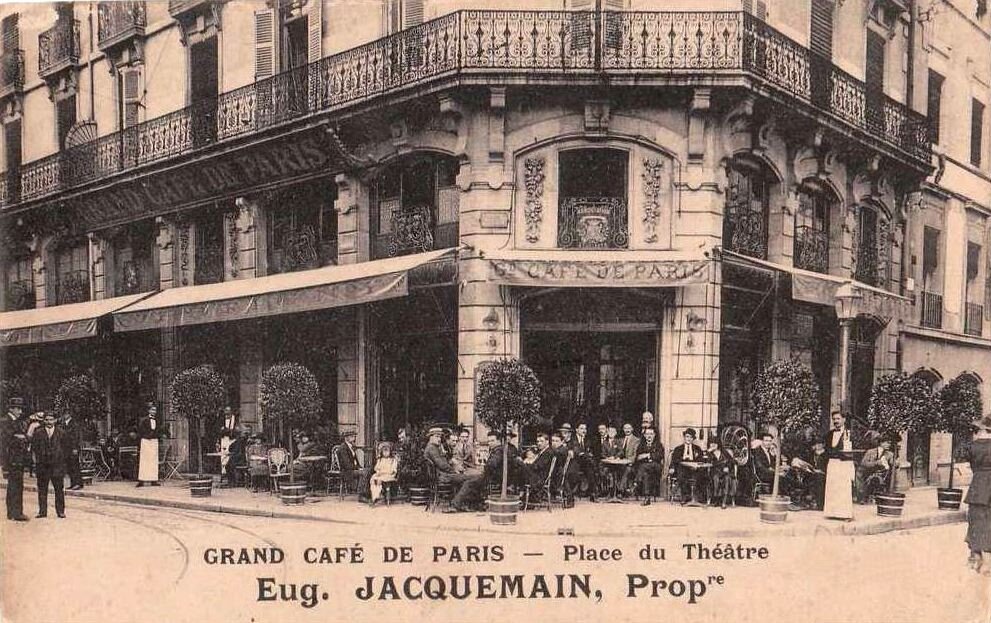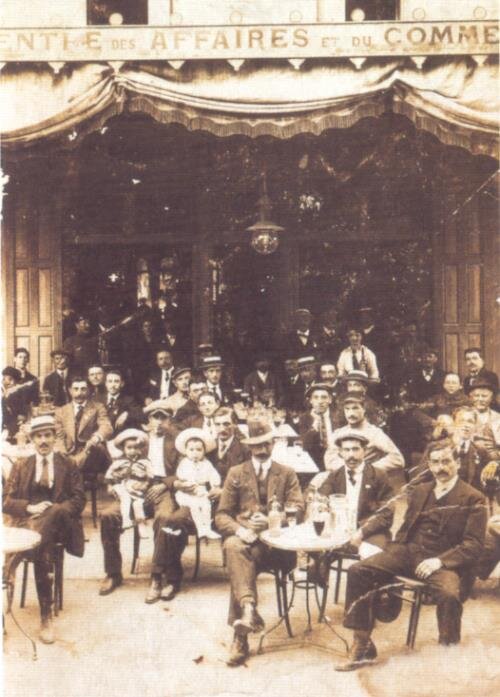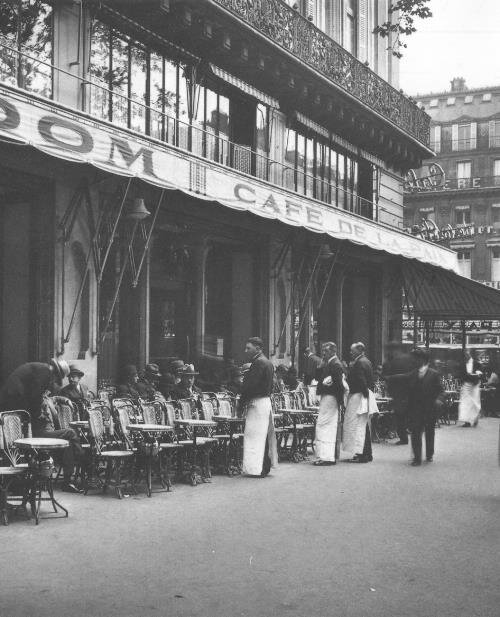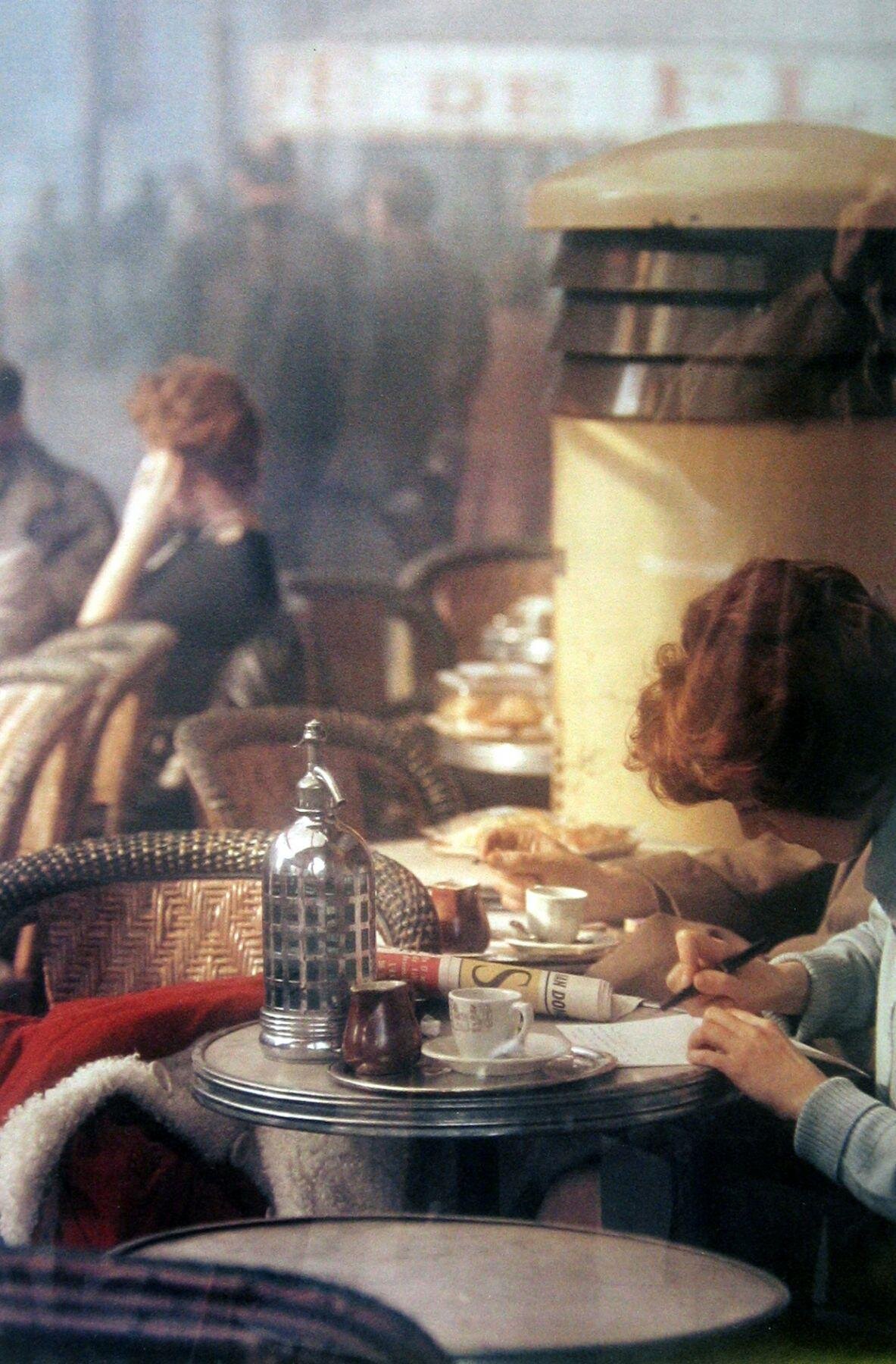The Grand Cafés of Paris: a journey to the beating heart of Parisian culture
Our trip to France began with a visit to Paris in pursuit of enchantment, followed by a leisurely jaunt to Provence, from the country to the coast. We’re back in the French capital this week for our final stop in France before we move on to our next stop in the Mediterranean.
This time in Paris, we’re here to explore the café culture that lies at the center of Parisian life. We’ll start with a brief history of the café and then we’ll take a tour of the most iconic and enduring cafés in Paris—places that have profoundly shaped modern society, not just in France but far beyond, by providing fertile ground for many of the great artists and thinkers of the 20th century. We’ll close by sharing how the grand cafés of Paris intimately inspire Elephantine.
the history of parisian café culture
“The cafe is not only a place to enjoy a cup of coffee, it is also a space - distinct from its urban environment - in which to reflect and take part in intellectual debate. Since the eighteenth century in Europe, intellectuals and artists have gathered in cafes to exchange ideas, inspirations and information that has driven the cultural agenda for Europe and the world. Without the café, would there have been a Karl Marx or a Jean-Paul Sartre?”
—The Thinking Space, The Café as a Cultural Institution in Paris, Italy and Vienna
In the Salon of Madame Geoffrin in 1755 by Anicet Charles Gabriel Lemonniercaca
Europe during in the Age of Enlightenment was abuzz with new ideas, new ways of seeing the world. It is during this period, between the 17th and 18th centuries, that the tradition of gathering to share philosophical ideas and engage in discussions—the salon—began to take root in European society.
Gradually, as Europe democratized, what had started as a custom reserved to royal courts and private parlors spilled out from these elite environs into public life—into the coffeehouses and cafés—where it grew to include artists, intellectuals, and revolutionaries discussing all aspects of life.
During the French Revolution, with the shape of society in question and lofty political and economic debates heavily weighing on the minds of French citizens, the café enabled a space for raving discussions about the ideas of the time. The Bourbon Restoration that followed witnessed a tempering of the intensity of café life and the evolution of the café into the more relaxed social institution it remains today.
The first café in Paris opened in 1672, but it wasn’t until Café Procope opened nearly 15 years later that the café was established as a cultural institution in Parisian life. By 1720 there were nearly 300 cafés in Paris, a number that grew to 1000 by 1750, and nearly 2000 by the close of the 1700s. From its earliest days, the café provided warmth and nourishment to artists and thinkers and fostered a spirit of community, conversation, and creativity that profoundly shaped Parisian life, French culture, and global society.
Fernand Lungren | The Café, 1882
Oleksandr Murashko | At the Cafe, 1902–03
Georges Croegaert | Au Café de la Paix, 1883
Konstantin Korovin (1861-1939) | Café de la Paix, Paris
the grand cafés of paris
café procope
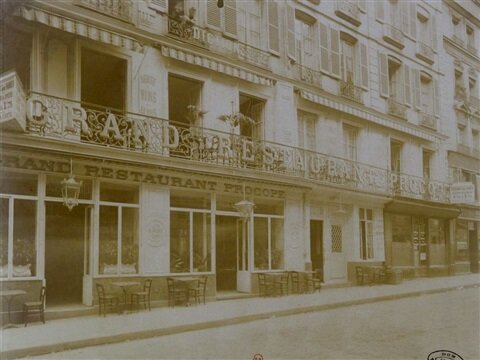

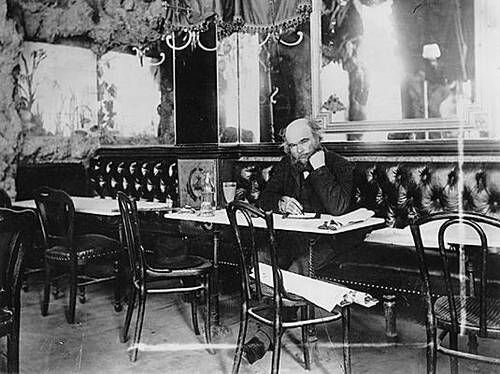
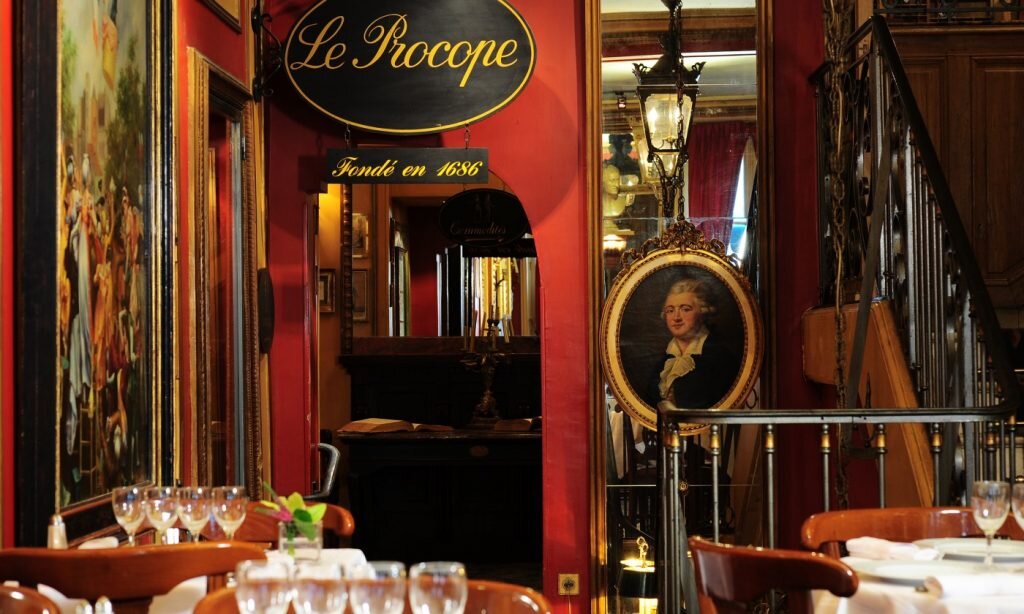
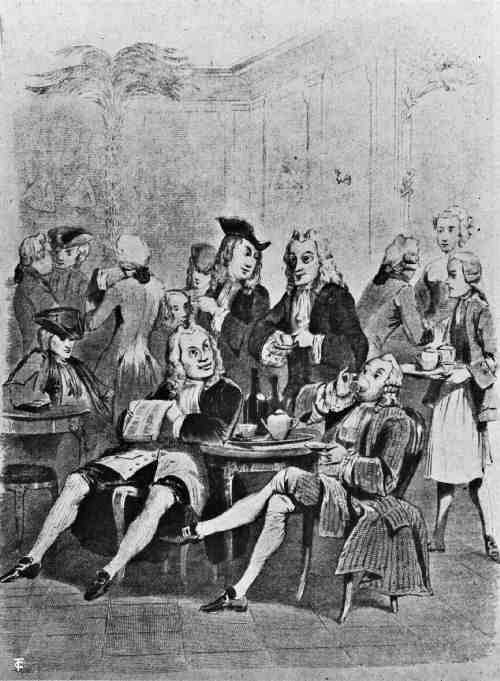
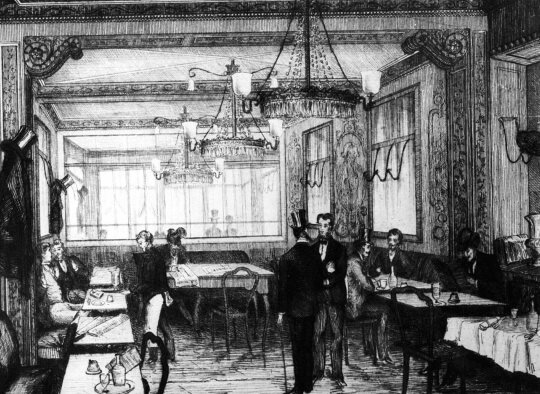

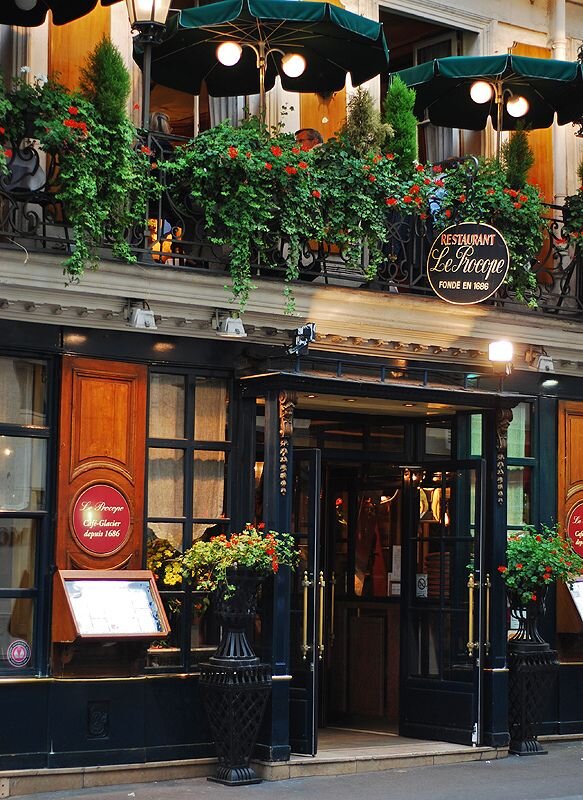
We start our tour at the beginning with Café Procope, the oldest café in Paris, in continuous operation since 1686. Modeled after the traditional coffeehouses of the Middle East and Western Asia, Procope put coffee, quite an exotic offering at the time, on the map in Paris. The café’s elite clientele, including Voltaire, Rousseau, and Diderot, further added to the allure. And finally, the decor, with its modern mirrors and marble tables, ensured that Procope had every ingredient necessary for the making of a grand café. All of the Parisian cafés that have followed trace their origins back to Procope.
13 Rue de l'Ancienne Comédie, 75006 Paris
Ilya Repin | Parisian Cafe, 1875
les deux magots

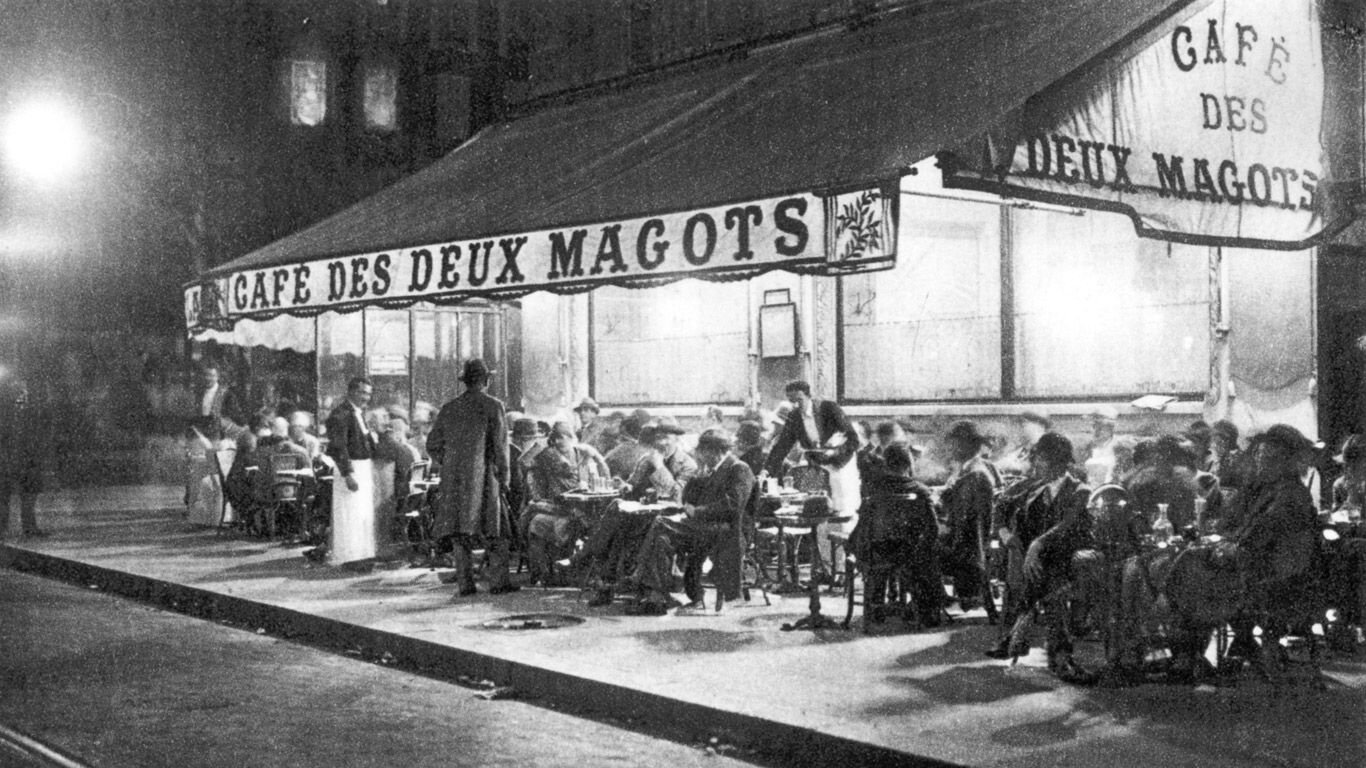
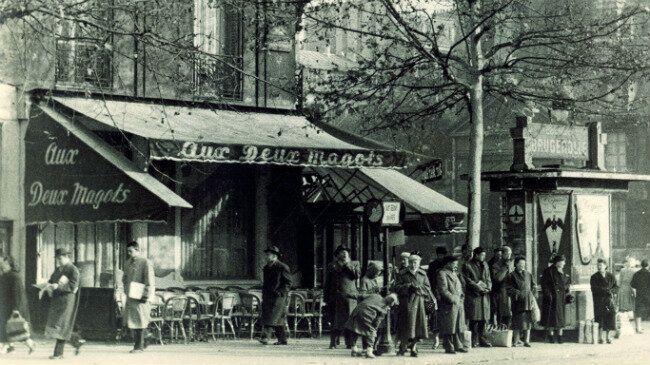
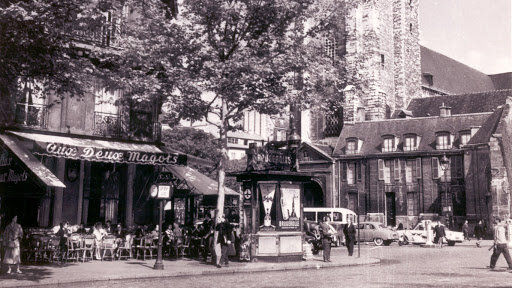
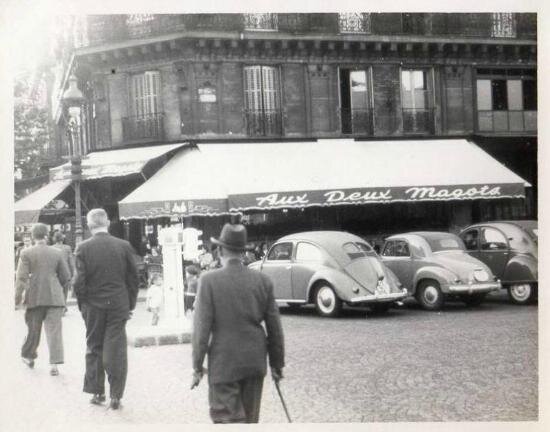

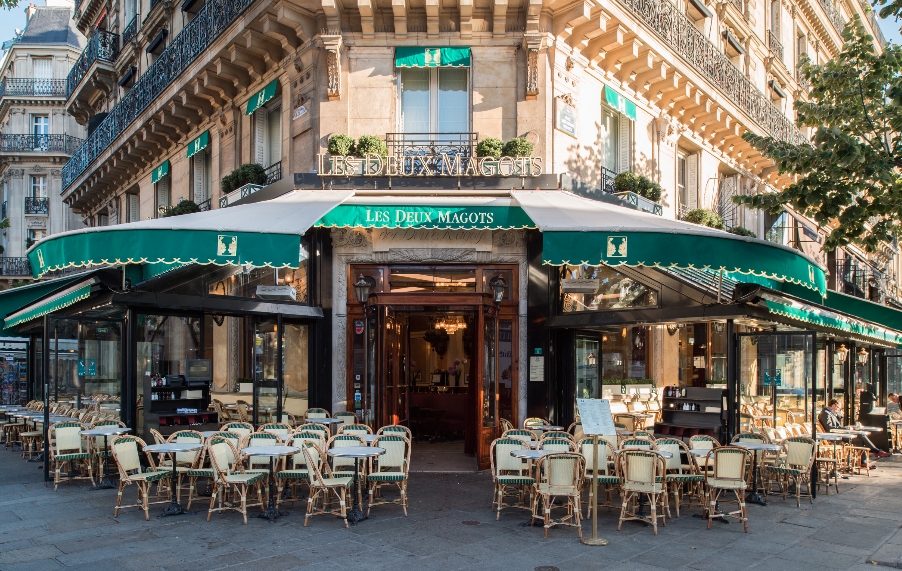
We make our way through the heart of Saint-Germain-des-Prés to our next stop, Les Deux Magots, welcoming us to a magical corner of Paris that has housed and nourished and incubated some of the 20th century’s most significant artists and thinkers. A café since 1885, Les Deux Magots has been a hub for Paris’s dynamic intellectual and artistic community for the last century. Here, Existentialists and Surrealists mingled and mulled over the freshest ideas of the time. Simone de Beauvoir and Jean-Paul Sartre, who lived around the corner on Rue Bonaparte, were fixtures here. So prolific was the literary activity at Les Deux Magots that the café established its own literary prize in 1933.
6 Place Saint-Germain des Prés, 75006 Paris
Irving Penn | Le Garçon de Cafe Les Deux Magots, 1950
Saul Liter | 1959
Saul Liter | 1959
Getty Images | Simone de Beauvoir and Jean-Paul Sartres at Les Deux Magots, 1970
café de flore
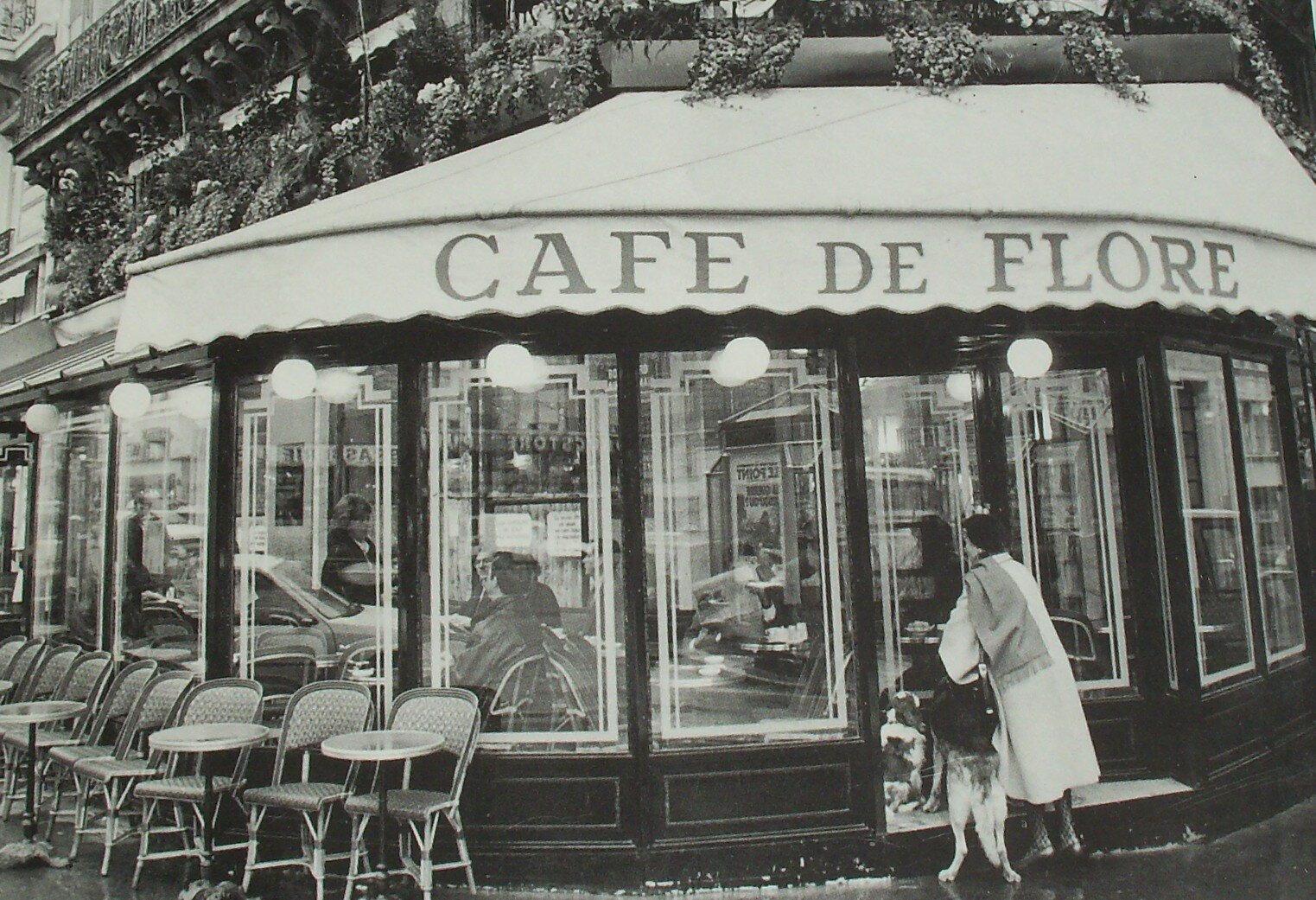
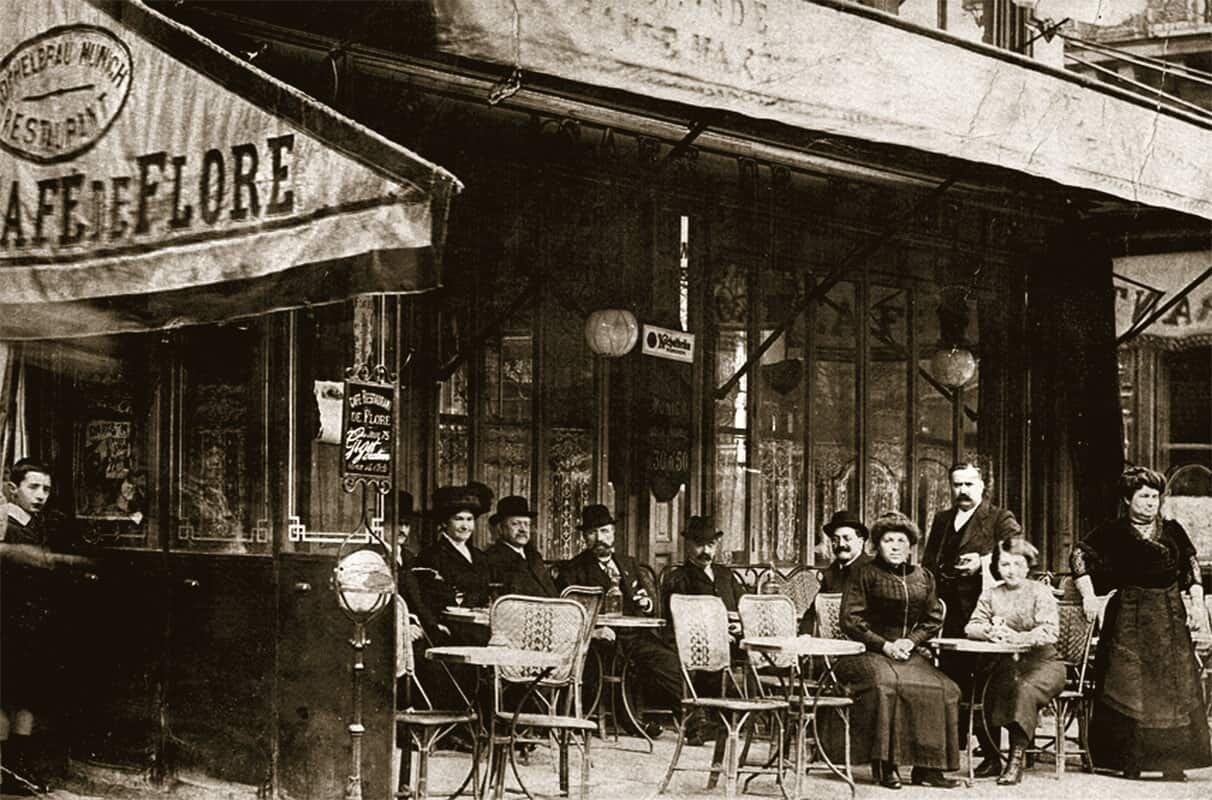

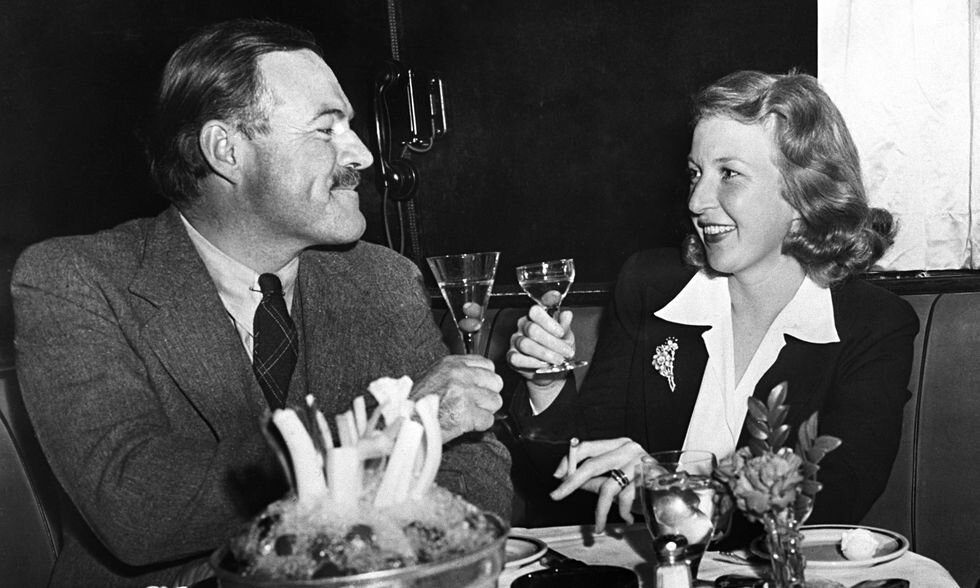
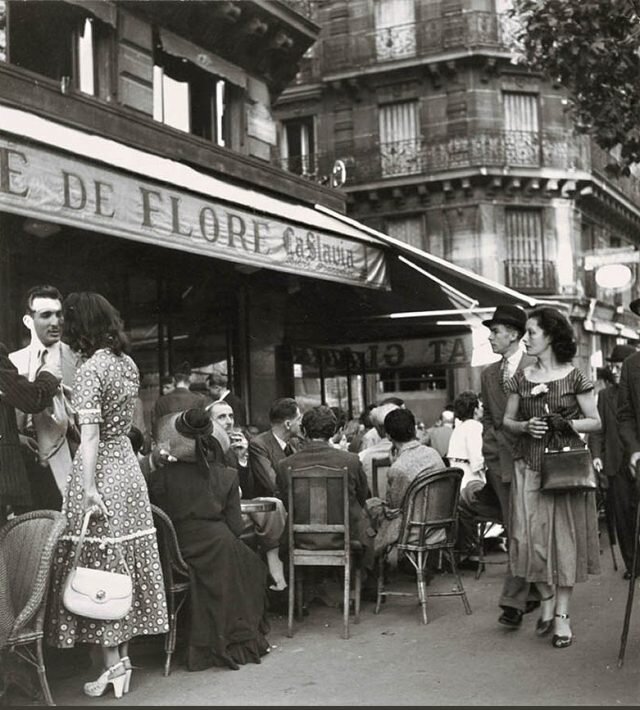
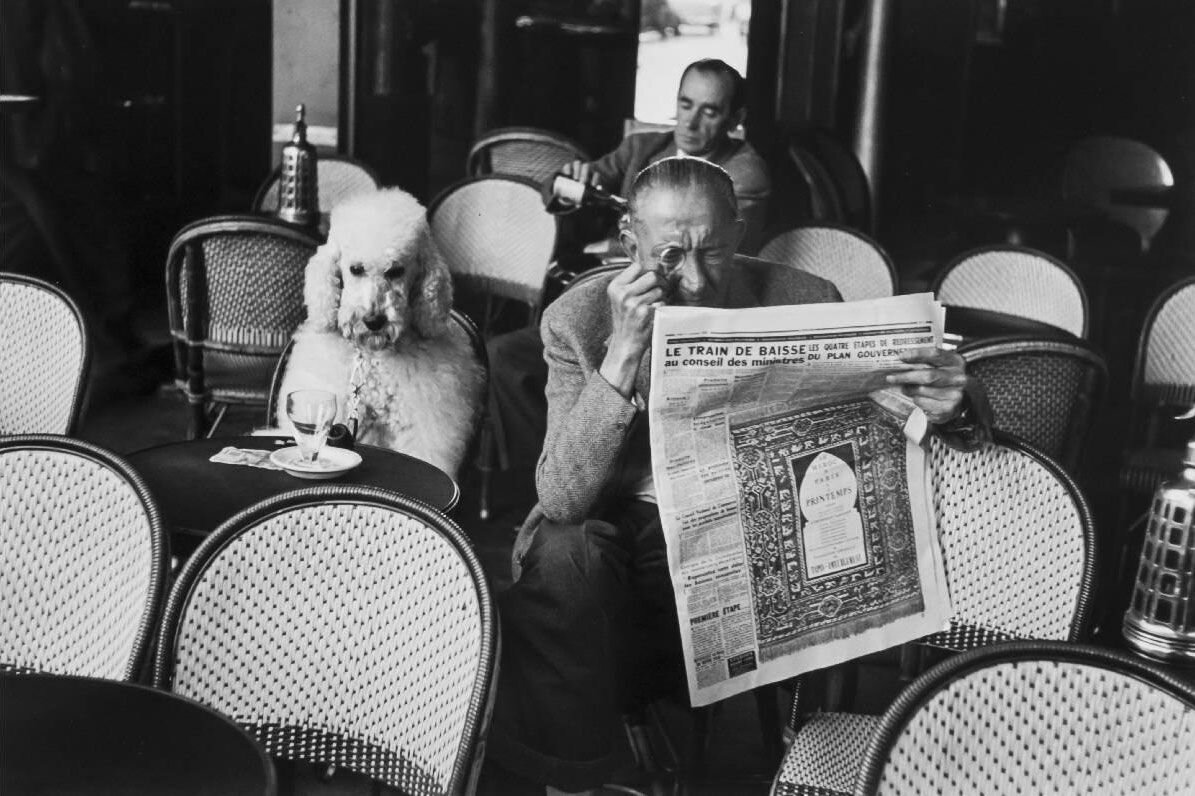
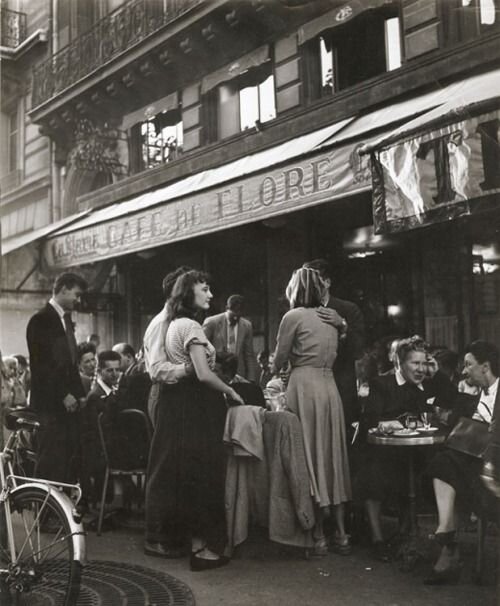
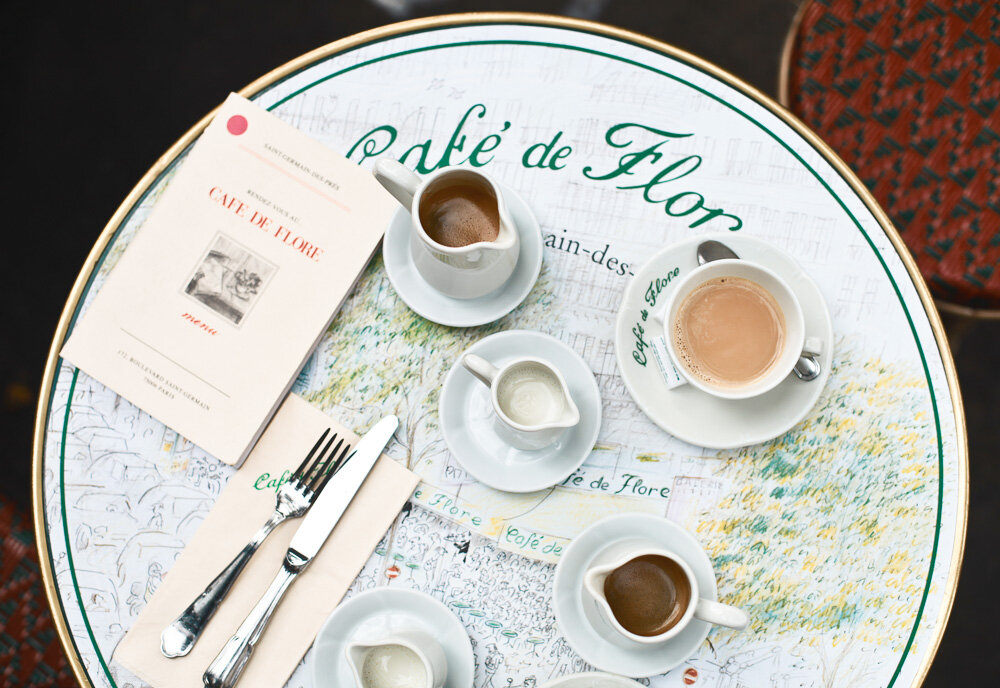
“We got completely settled here: from 9am till noon we worked here, then we went for a lunch at 2pm, we came back and talked with friends till 8 in the evening…After the dinner, we arranged meetings with friends here. It can seem strange, but we are at home at Café de Flore.”
—Jean-Paul Sartre
On the next block, not a few hundred steps away from Les Deux Magots, is perhaps the most iconic of Paris’s grand cafés—Café de Flore. Founded in 1870, the café was originally less popular than Les Deux Magots, but eventually eclipsed it in fame. Adam Gopnik, in his essay A Tale of Two Cafes, explored why, posing as a potential explanation that Les Deux Magots, iconized by Sartre, attracted tourists in the Sartre-Beauvoir heyday, which took away from the distinct salon vibe that attracted these thinkers and artists. Fleeing the tourists, the café set migrated to nearby Café de Flore and stayed there. Eventually, Café de Flore was claimed by the fashionable set, although its literary, philosophical and artistic history remains in its DNA. Describing the Flore in her book about the fashion scene in 1970s Paris, Alicia Drake writes, “Café de Flore was the essence of all that was desirable on the Rive Gauche of Paris. It stood on the corner of Saint Germain life, an irresistible mix of café society, literary, artistic, wanton, fashionable ambitions…It was a mirrored place of entrances and encounters.”
172 Boulevard Saint-Germain, 75006 Paris
Robert Capa | Cafe de Flore, 1950s
Jeanloup Sieff | Cafe de Flore, Paris, 1975
Henri Cartier-Bresson | Cafe de Flore, 1959
la rotonde
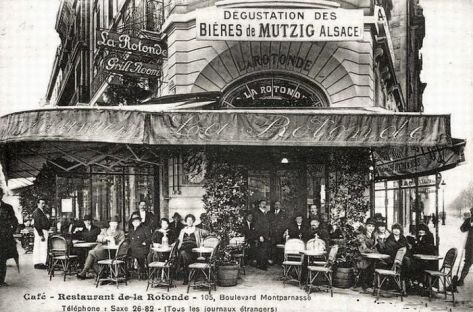
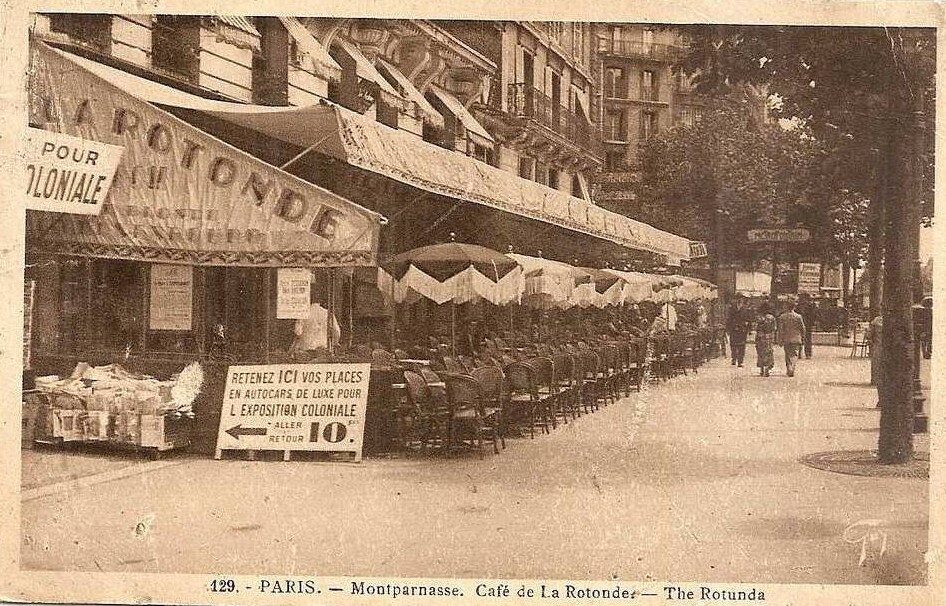
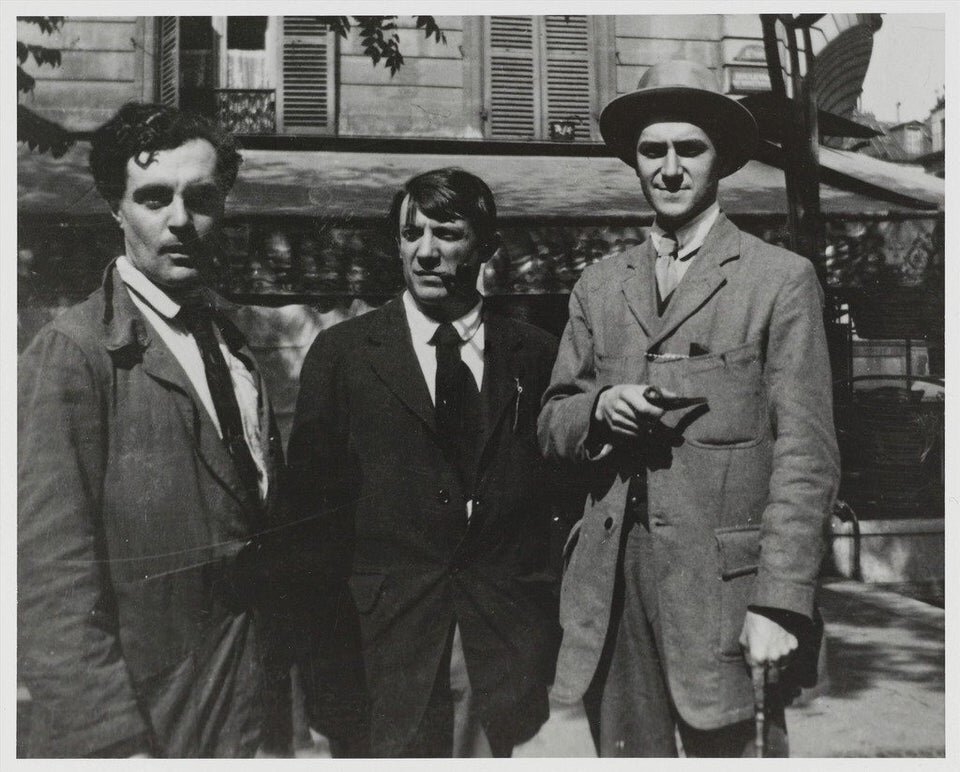

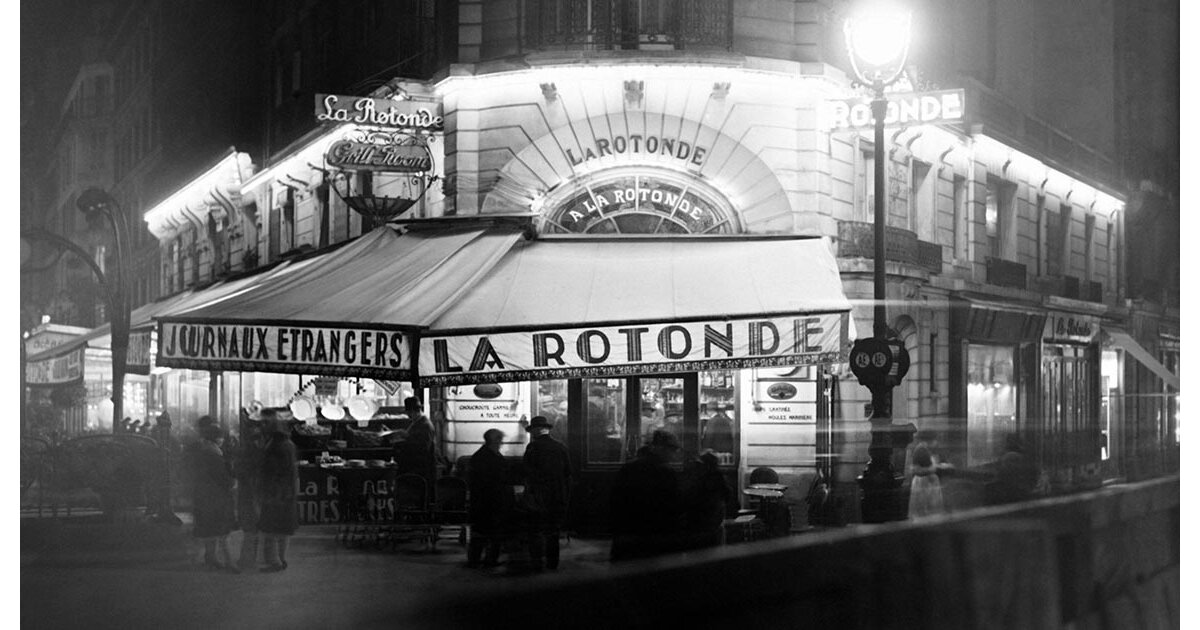
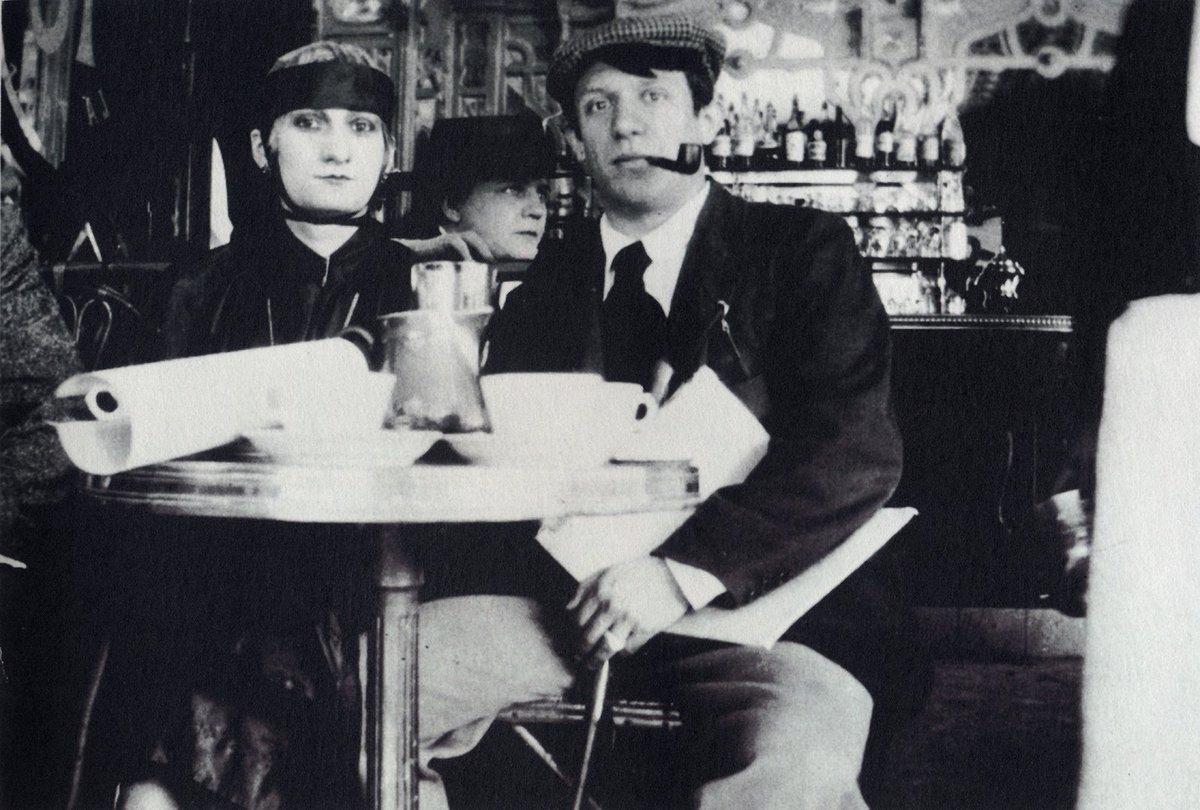
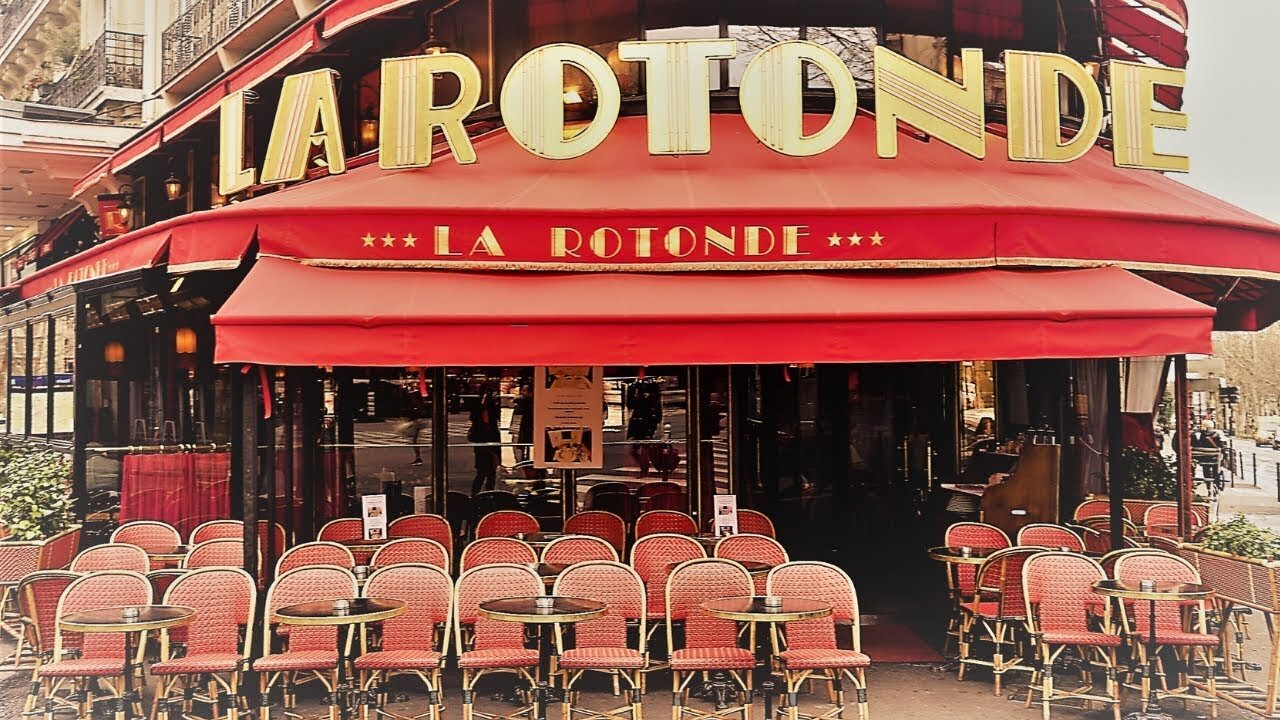
"No matter what cafe in Montparnasse you ask a taxi-driver to bring you to from the right bank of the river, they always take you to the Rotonde.”
—Ernest Hemingway, The Sun Also Rises
We move now from the St. Germain neighborhood to Montparnasse, walking through the Jardin de Luxembourg, to arrive at Café La Rotonde, frequented by artists and intellectuals since it was founded in 1911. Victor Libion, the owner, understanding the economic hardships often felt by his clientele, accepted sketches on napkins in exchange for coffee. And so, La Rotonde’s walls were covered with drawings from artists like Diego Rivera and Pablo Picasso, whose studio was just down the street from the café.
105 Boulevard du Montparnasse, 75006 Paris
Postcard depicting Boulevard du Montparnasse, circa 1925
Leopold Zborowski
Pablo Picasso | La Rotonde, 1901
le dôme
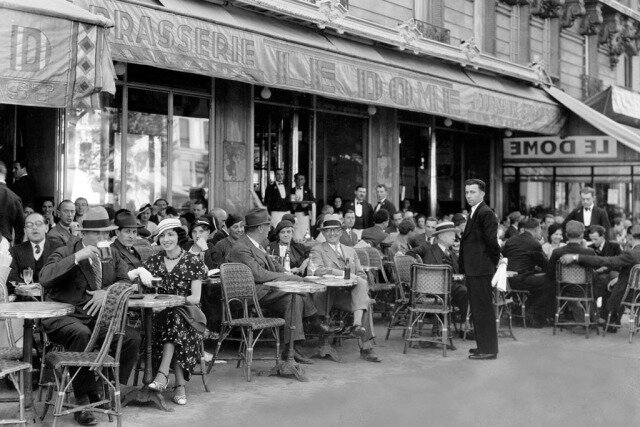
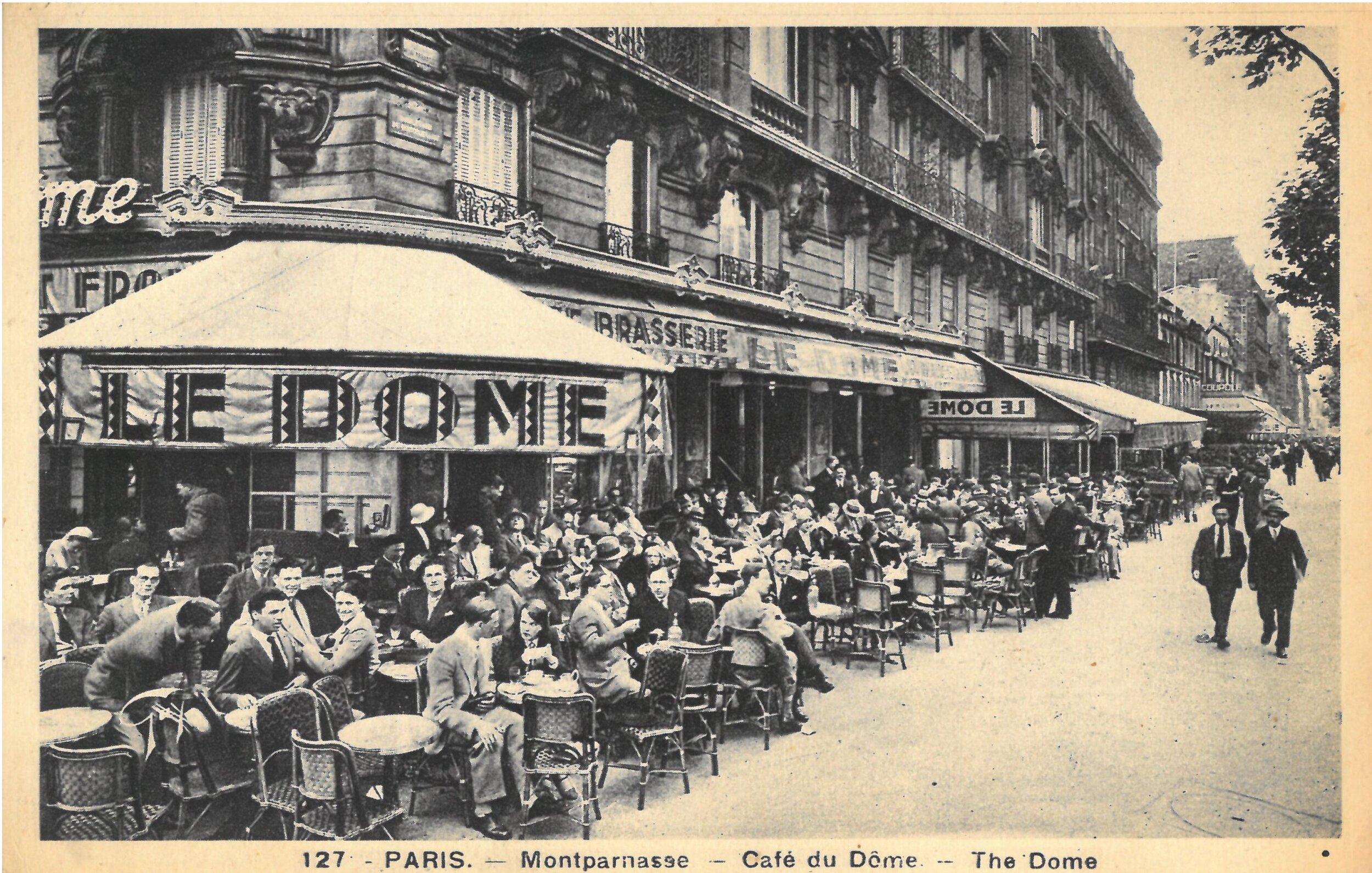
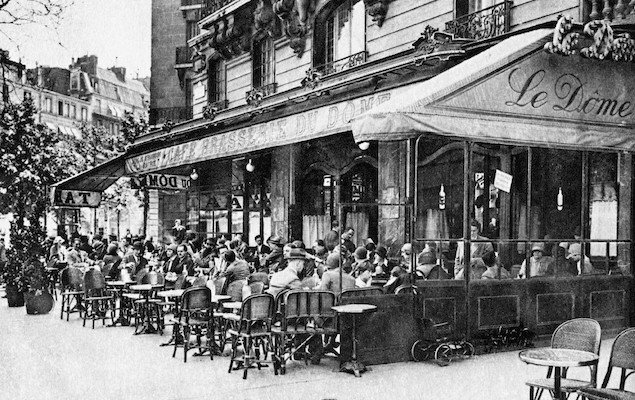

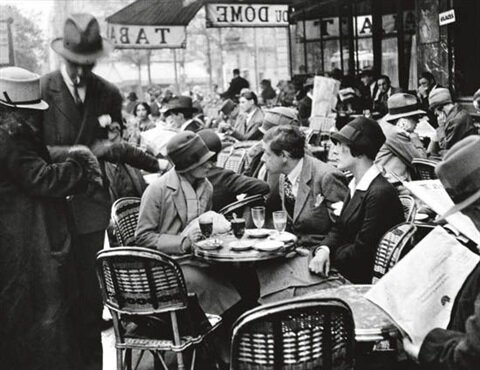
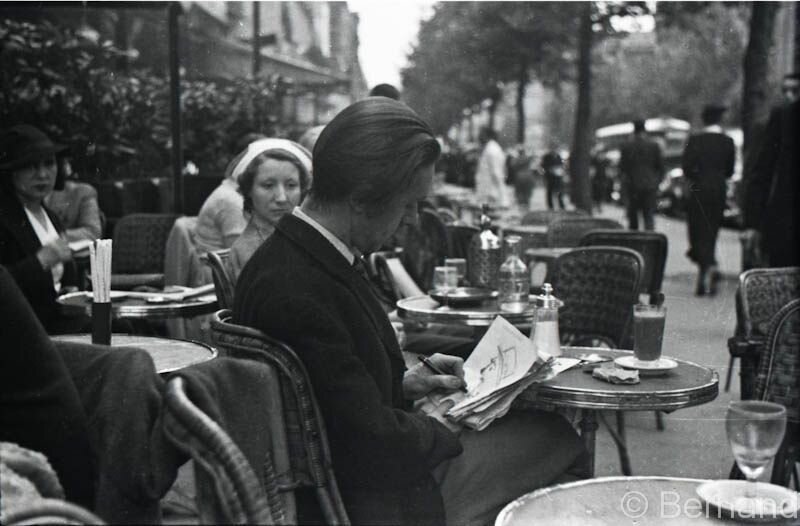
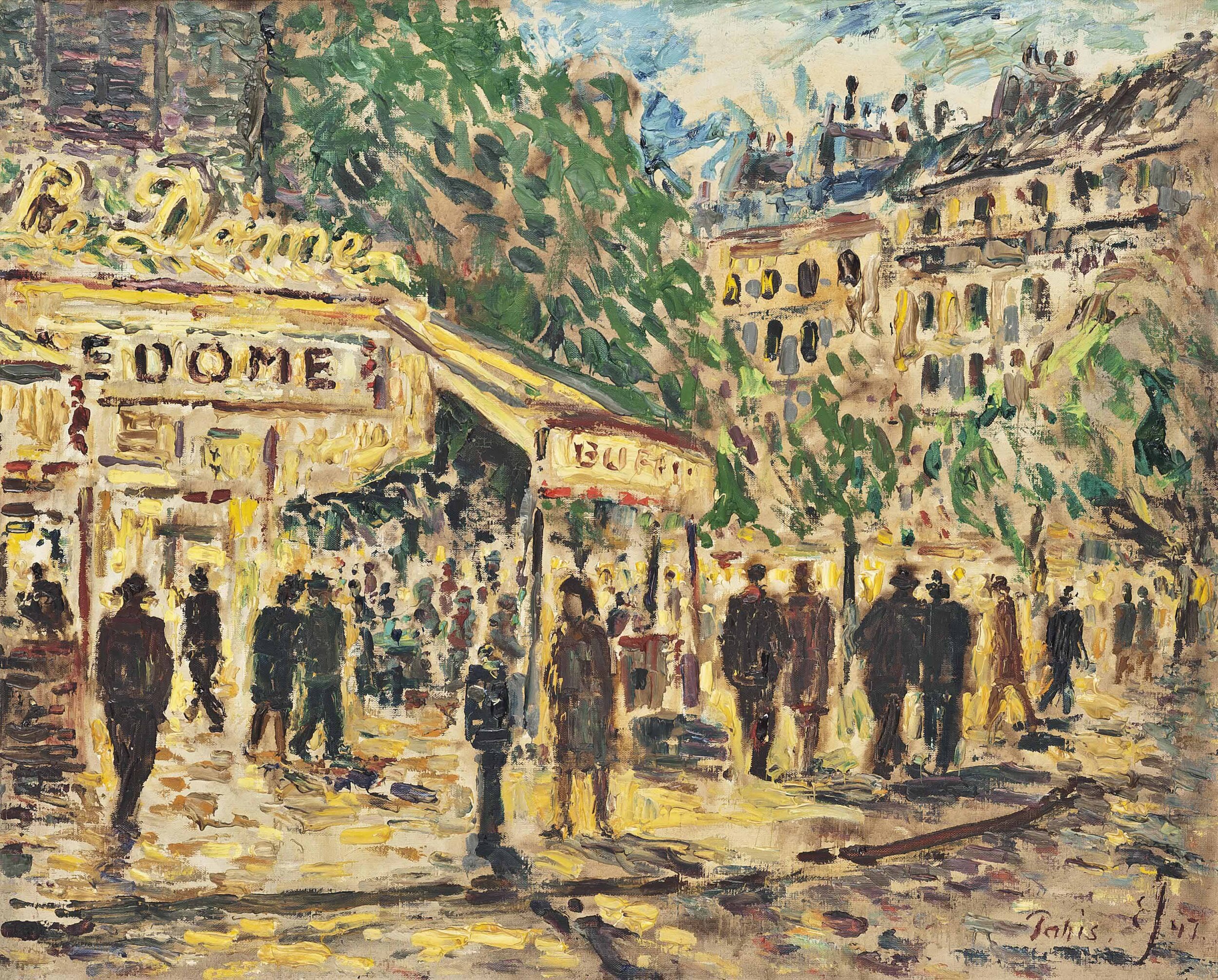
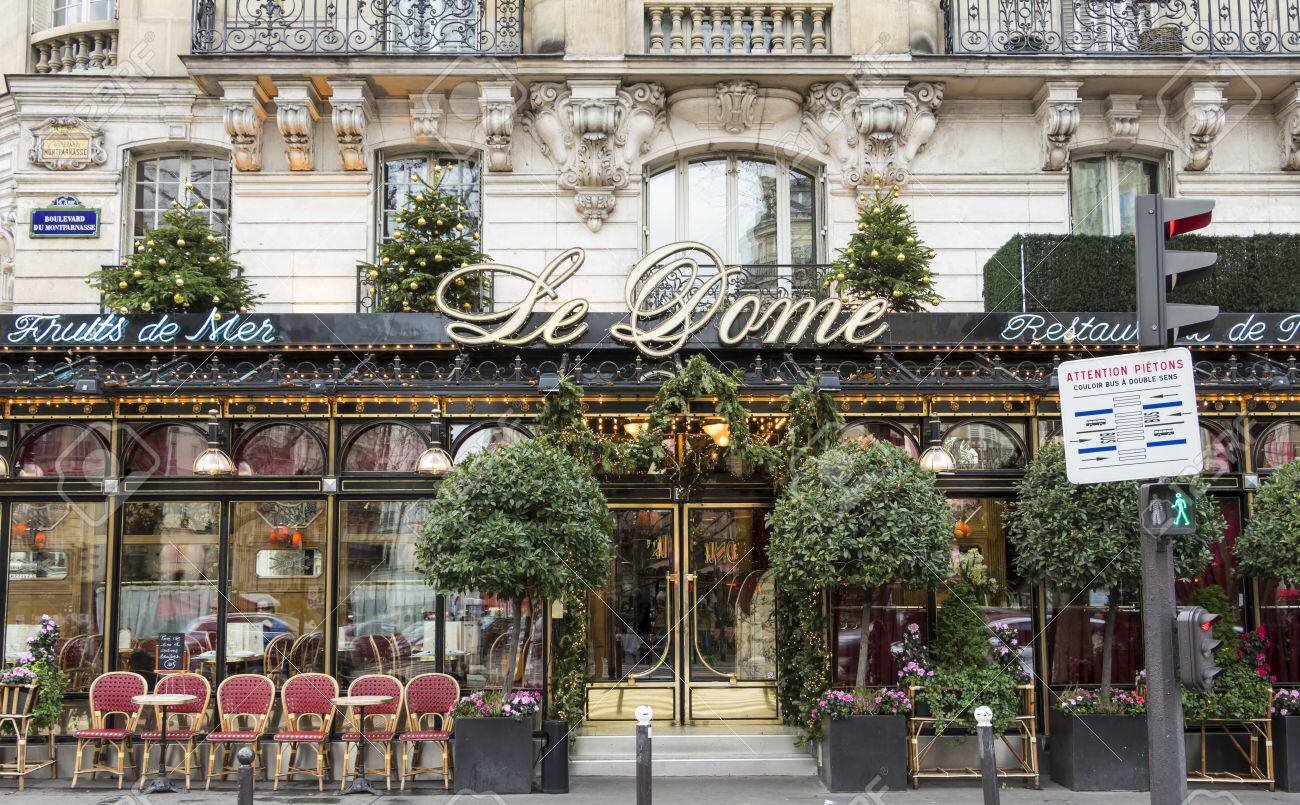
Just across the street from La Rotonde is Le Dôme, founded in 1898, and the first café in Montparnasse that drew a distinctly intellectual and artistic community. In the early 1900s, it was the place, the singular spot where the avant-garde shaping Parisian society went to engage in the unique alchemy a café provides. The crowd at Le Dôme, referred to as Dômiers, included Anaïs Nin, Khalil Gibran, Amedeo Modigliani, Wassily Kandinsky, and others—a great many of the 20th century’s most prolific artists, writers, and thinkers.
108 Boulevard du Montparnasse, 75014 Paris
Isabele Nicholas, Meret Oppenheim (unconfirmed), and Alberto Giacometti on the terrace of La Dôme café, Paris 1936. Photo: Béla Bernard, 1936
Ejner Johansen | Le Dome, 1947
la closerie des lilas
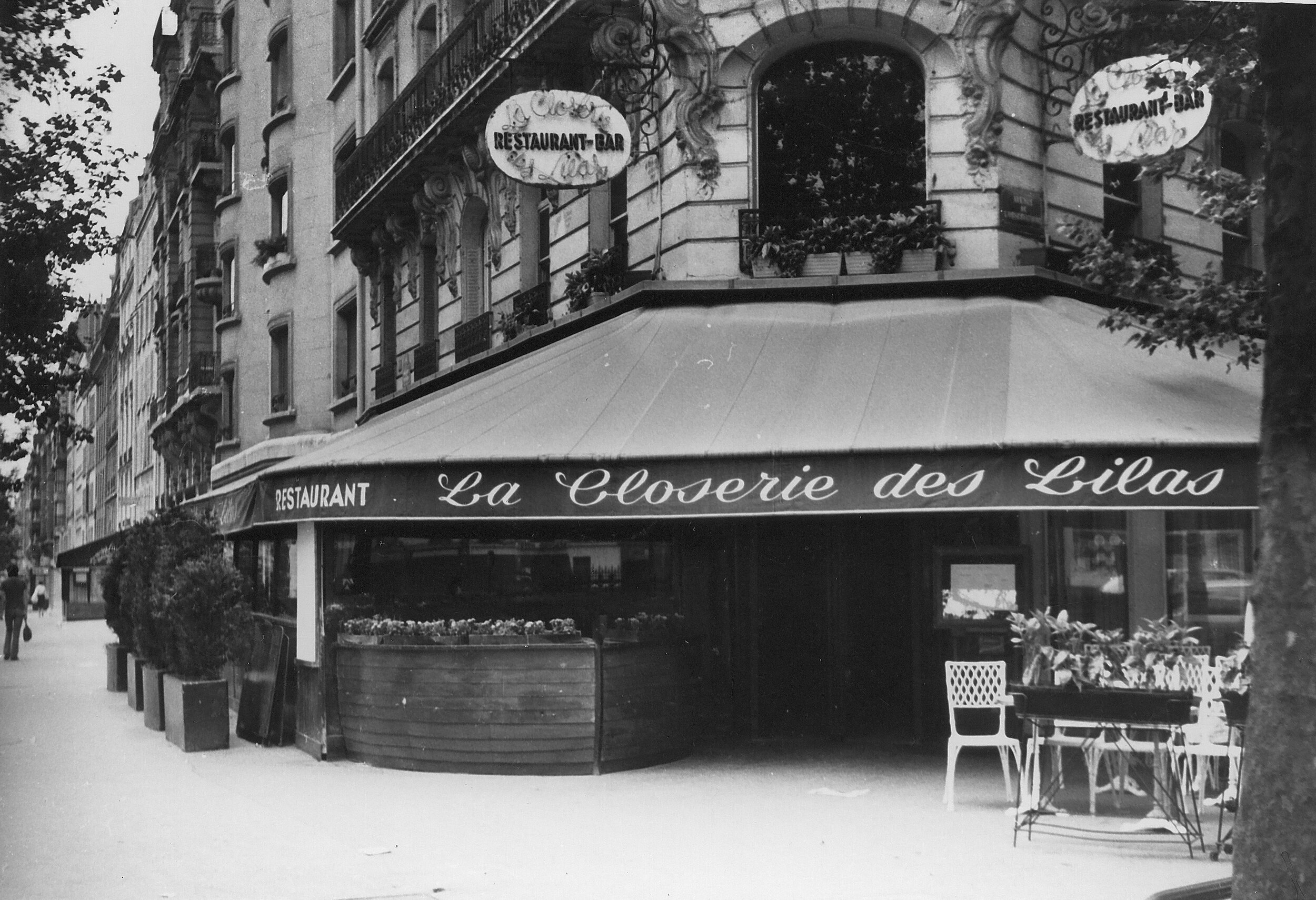

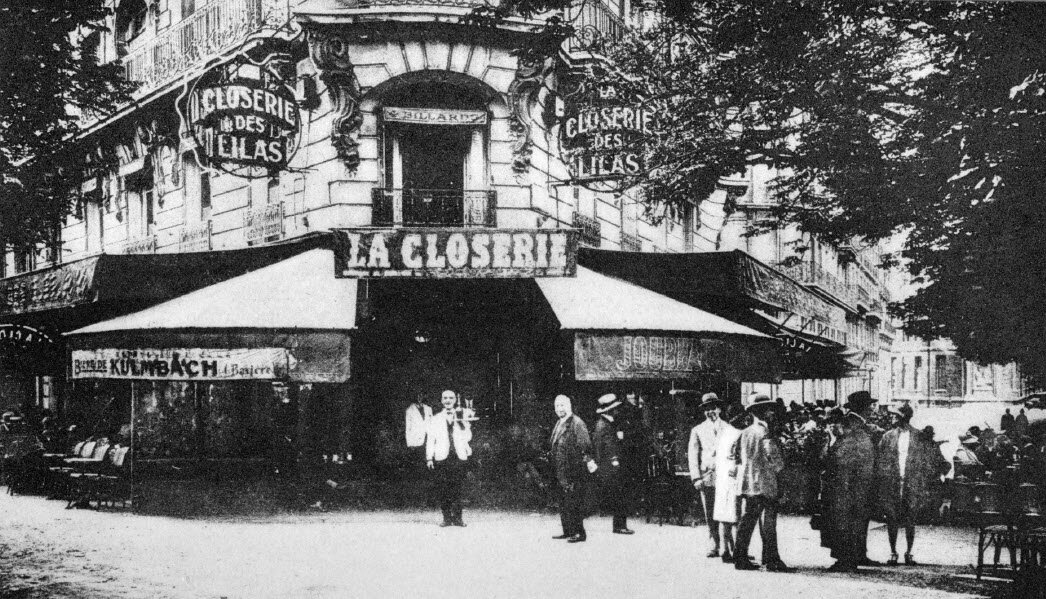
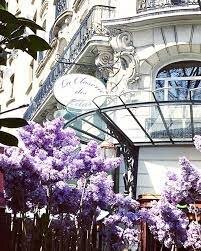
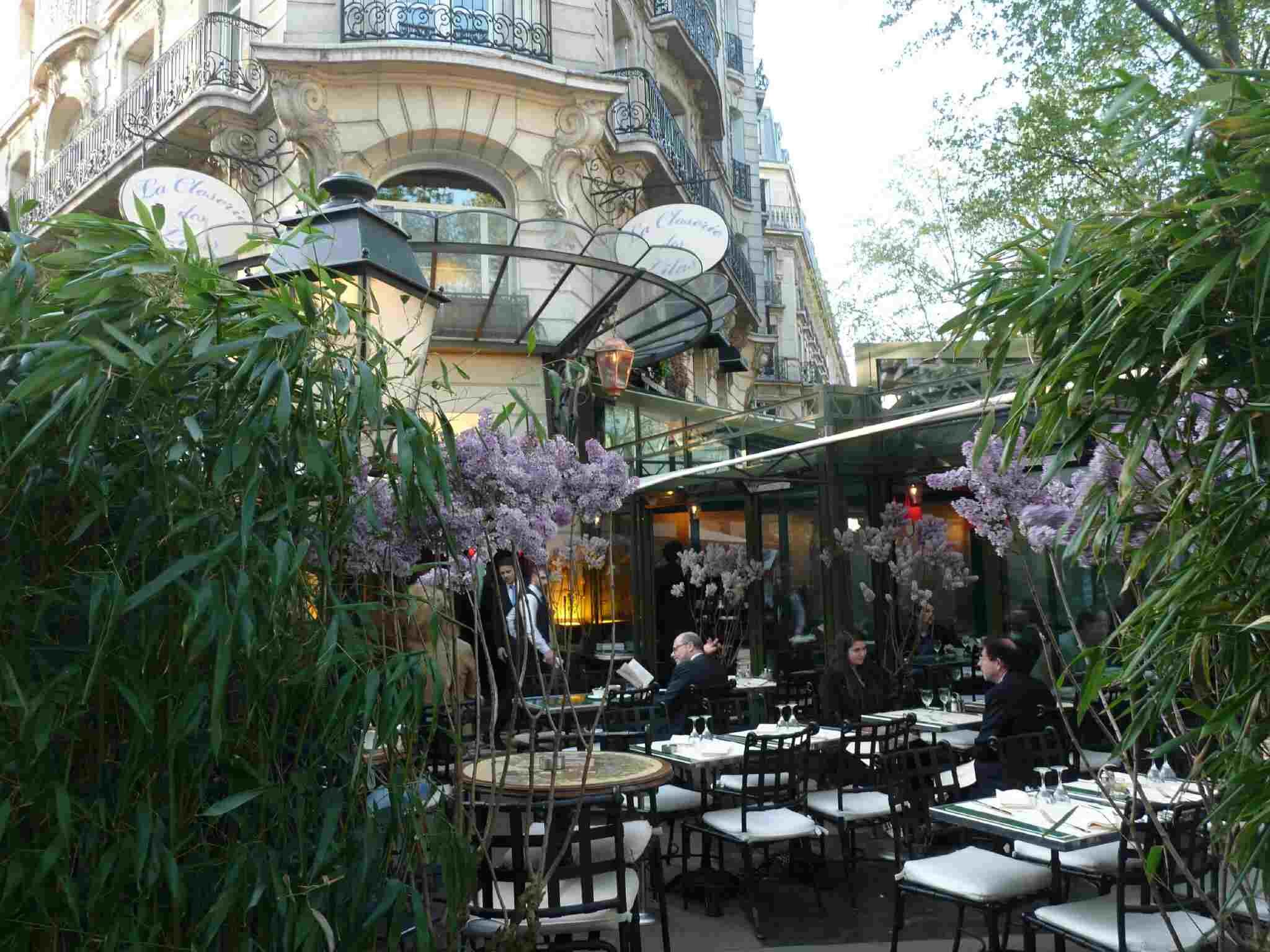
“There was no good café nearer to where we lived than La Closerie des Lilas, and it was one of the best cafés in Paris. It was warm there in winter; in spring and autumn, the terrace was so pleasant…”
—Ernest Hemingway
Opened in 1847, La Closerie des Lilas, became known for its terrace overflowing with greenery, particularly lilacs, which blossom in summer. In the 19th century, Charles Baudelaire and Emile Zola could be found writing here. Later, it was frequented by artists and writers including Hemingway, Picasso, Fitzgerald, and Man Ray. La Closerie des Lilas was particular dear to Hemingway, who wrote portions of The Sun Also Rises here, describing the experience in A Moveable Feast—“I sat in a corner with the afternoon light coming in over my shoulder and wrote in the notebook. The waiter brought me a café crème and I drank half of it when it cooled and left it on the table while I wrote.” Today, the spirit of the past still animates La Closerie des Lilas, where marble tables adorned with little brass plates are engraved with the names of the café’s famous patrons throughout the years.
171 Boulevard du Montparnasse, 75006 Paris
La Closerie des Lilas, 171, Boulevard de Montparnasse, Paris, 1909
The Blue Hat, Closerie des Lilas John Duncan Fergusson (1874–1961)
La Closerie’s menu
Jean Cocteau | La Closerie des Lilas, 1960
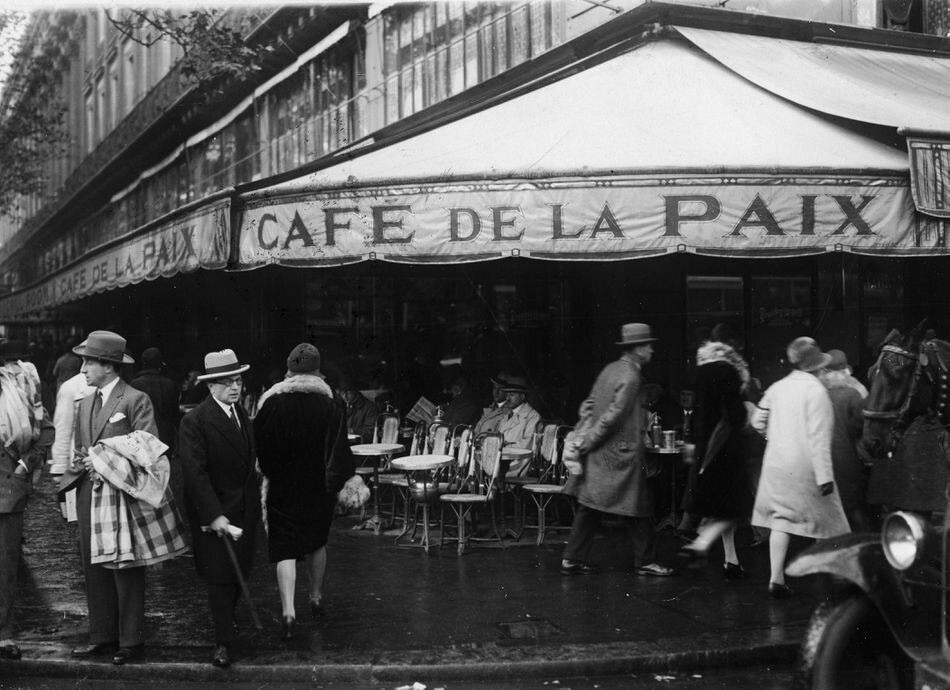
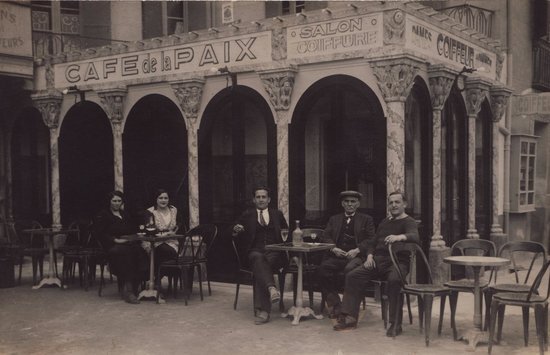
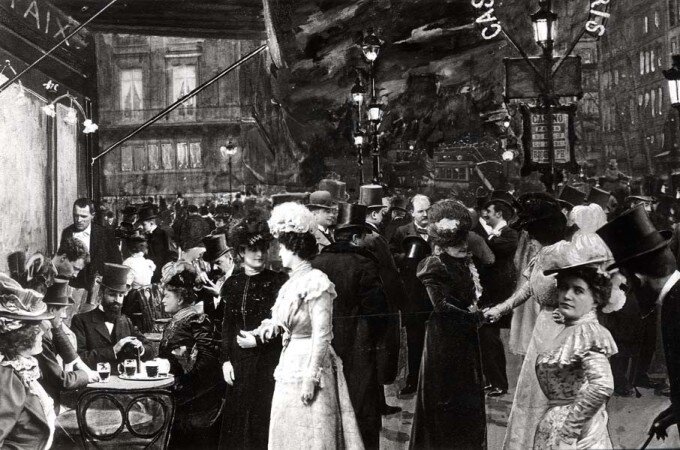
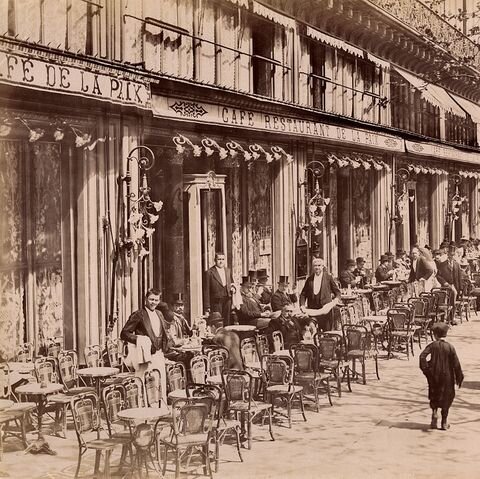
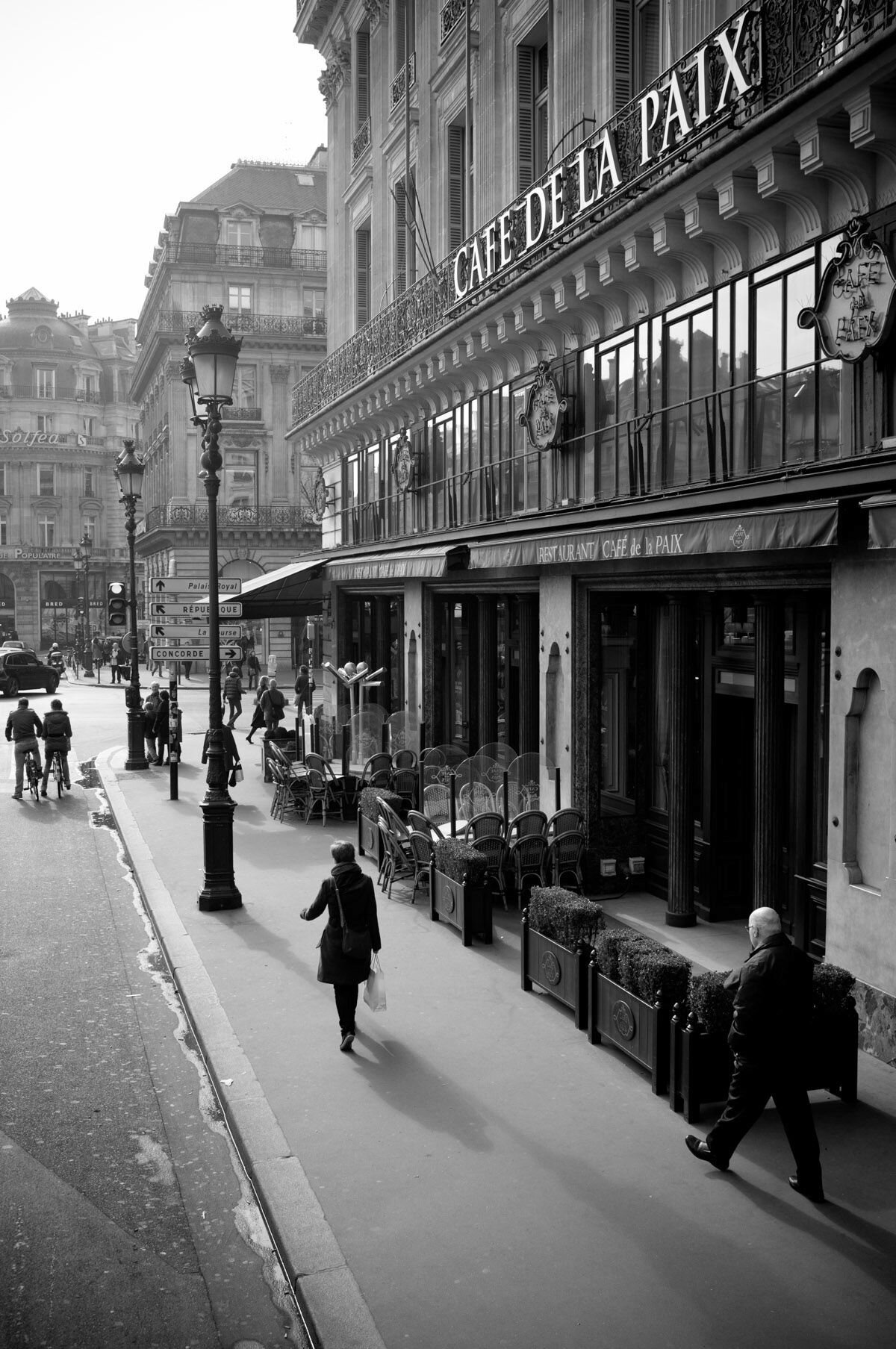
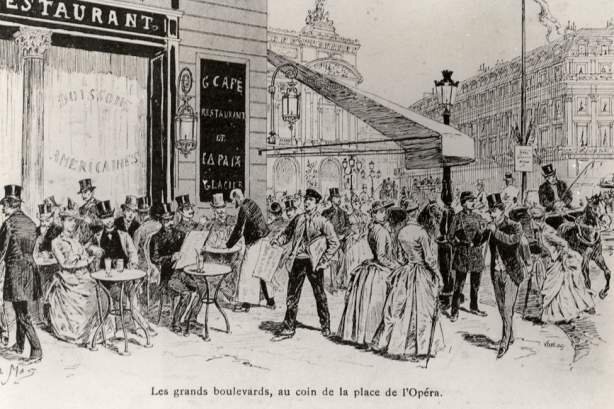
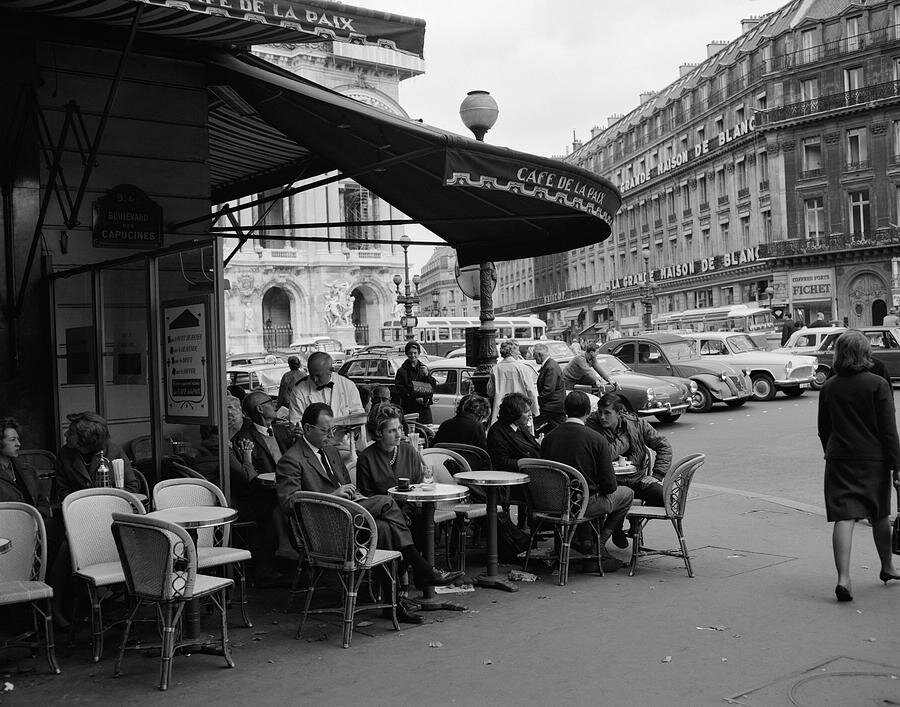
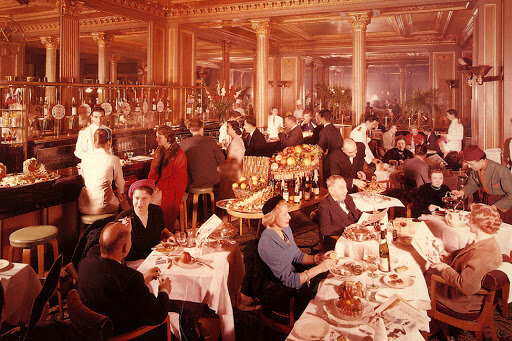
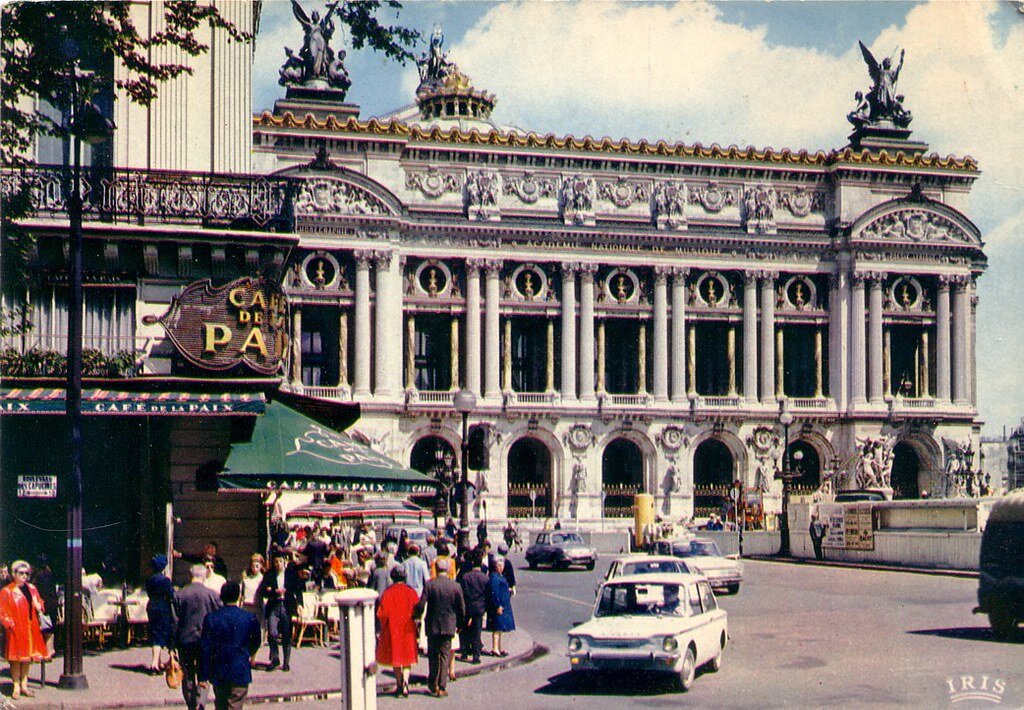
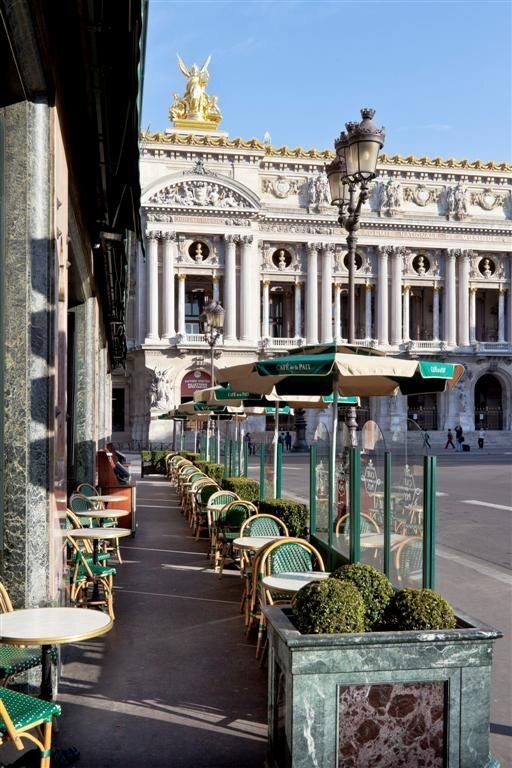
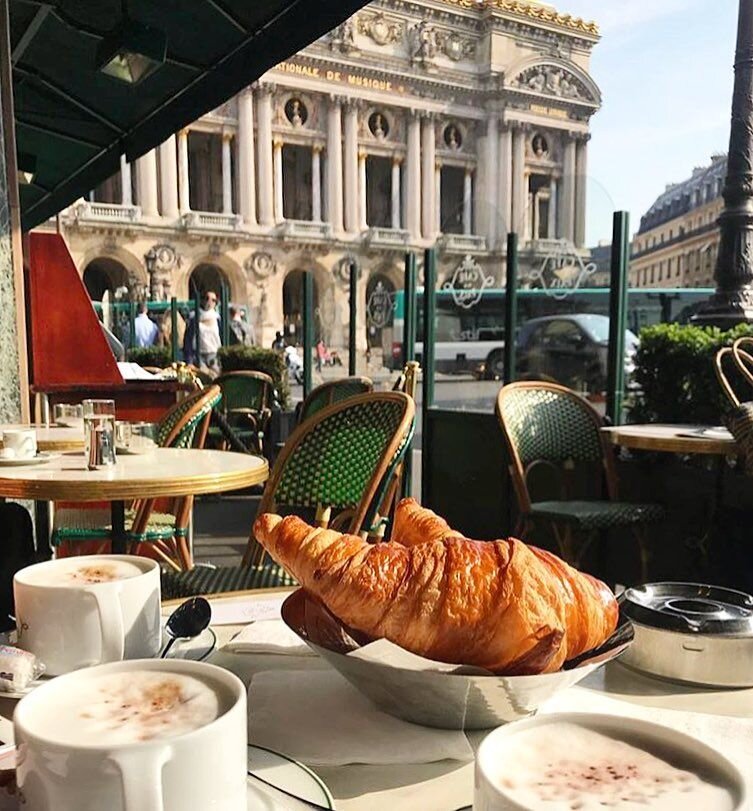
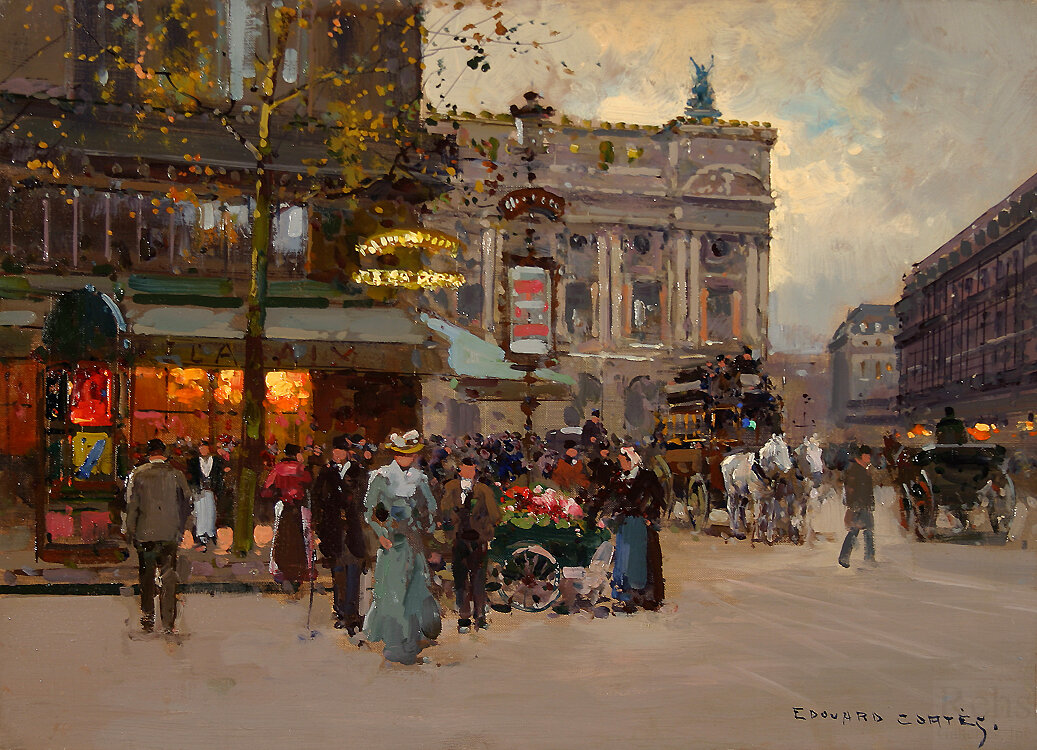
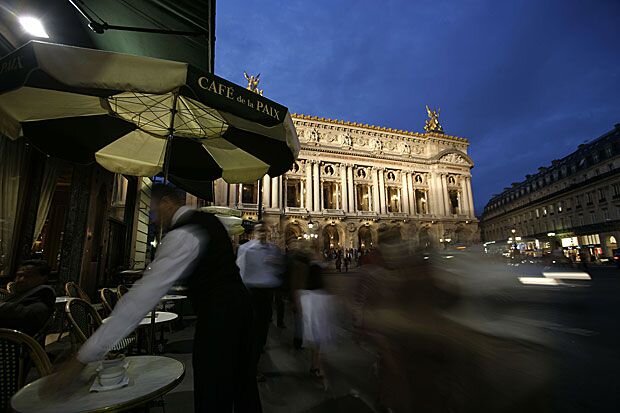
café de la paix
On the Right Bank, overlooking the Palais Garnier, is Café de la Paix, one of the oldest and grandest of Paris’s cafés, founded in 1862. Seated on the terrace, absorbing the atmosphere steeped in time, one can easily imagine Victor Hugo, Sergei Diaghilev or Charles De Gaulle seated nearby, enjoying a coffee and conversation.
5 Place de l'Opéra, 75009 Paris
1960s Patrons At Cafe De La Paix by Vintage Images
Jean Georges Beraud
Terrace of Cafe de Paix, 1900
and a few more…
Café Tournon | 18 Rue de Tournon, 75006 Paris
Paris, from the start of the 19th century, became a place of intellectual and social refuge for African American artists and intellectuals. The Café Tournon was a meeting place for the African American artistic expatriate community in Paris. James Baldwin, Richard Wright, and Beauford Delaney were regulars. Duke Ellington and his jazz band made their Parisian debut here.
Duke Ellington and Beauford Delaney at the Cafe Tournon in Paris
Richard Wright at the Cafe Tournon circa 1950
La Coupole | 102 Boulevard du Montparnasse, 75014 Paris
Opened in 1927, this art deco café figured prominently in Paris’s Années folles, the economic and artistic boom that took place in after the end of World War I. A beloved meeting place for members of Paris’s Lost Generation, Hemingway, Miller, Picasso and Matisse gathered here. It was one of Josephine Baker’s favorite spots. F. Scott Fitzgerald and his wife Zelda went so frequently they had their own corner.
The basement of La Coupole was the spot for dancing and celebrations
Fouquet’s | 99 Avenue Des Champs-Élysées, 75008 Paris
Founded in 1899 by Louis Fouquet, this quintessential Parisian café is located in the Hotel Barrière at the corner of two iconic Parisian streets: the Avenue des Champs-Élysées and Avenue George V. A favorite meeting place for Parisians working in cinema, Fouquet hosts a gala dinner after the César Award, the highest film honor in France.
Agence Keystone | The Fouquet’s - Les Champs Elysées Paris, circa 1930
the universal café
The Parisian café is a remarkable institution. Of course, the grand cafés in the time of Beavoir and Sarte, Baldwin and Picasso, Ernest Hemingway and Josephine Baker were singular—it was a moment in time and place when the stars aligned, forever altering the trajectory of modern art and culture, philosophy and literature. But it remains as true today as it was a hundred years ago that the café is a place where magic is possible. Elephantine is inspired by this tradition, by the particular alchemy of a café—of community gathering, of creativity blossoming, of life unfolding over the simple pleasure of coffee and something to eat. The café is a place of possibility—a place to think something big, to meet someone new, to see the oneself from a changed lens, to imagine a different world, and to dream.

